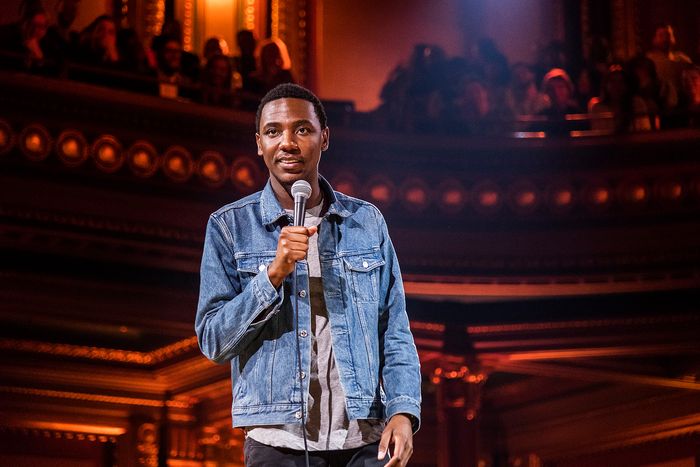
End Times Fun, Marc Maron’s appropriately apocalyptic 2020 Netflix special, opens with the comedian considering his role. He starts by telling the audience “It’s my job to … think of funny things,” but he sounds uncertain. The camera shoots him from behind, between two of the backdrop’s wood slats, like a pair of binoculars peering through spread-open blinds. Instead of depicting Maron as an all-knowing truth teller, late director Lynn Shelton — Maron’s former partner who also directed his 2017 special, Too Real — chooses to shoot him like a justified paranoiac, a man who acts like he’s being watched because he is. Throughout the special, Shelton’s cameras are active, tracking his every move; her frequent yet arhythmic cuts never let the viewer get too comfortable. The marriage of Maron’s deliberately conceived, thematically cohesive hour of comedy and Shelton’s visual storytelling is not what makes End Times Fun funny, but it is what makes the special special in a time when the form is beginning to be approached by comedians and embraced by audiences as an artistic achievement in and of itself.
Stand-up specials haven’t always been much to look at. In a recent New York Times profile, Marty Callner, the director credited with pioneering the classic stand-up special look at HBO in the late ’70s, described his job as “reportage.” (“If a comedian is doing something physical, it better be a head-to-toe shot,” he explained. “If he’s making a poignant point, it better be on a close shot.”) Some comedians deviated slightly from the default; five of the most revered specials of all time — Richard Pryor’s Live in Concert (1979) and Live From the Sunset Strip (1982), Bill Cosby’s Himself (1983), Eddie Murphy’s Raw (1987), and Martin Lawrence’s You So Crazy (1997) — were produced on film rather than tape, lending them a more cinematic quality. (Sandra Bernhard’s structural and visually unique 1990 cult classic, Without You I’m Nothing, was also shot on film.)
But these were exceptions to the rule. HBO specials continued in Callner’s style, even after he moved on from them in the ’80s and networks like MTV and Comedy Central began banking their own brightly lit half hours. Even the most popular comedians made specials sparingly. Jerry Seinfeld released his first special (Stand-Up Confidential) in 1987, and his second (I’m Telling You for the Last Time) in 1997. Despite the decade between shoots, the specials both attempt to faithfully re-create the live experience. The goal of a special for many comedians was to advertise live stand-up, not burn through or recycle material before audiences had the chance to see it in person.
Then, around 2007, Louis C.K. helped usher in a different approach: He vowed to make a new special every year. (Since Shameless that year, C.K. has released eight specials total.) At the same time, following in the footsteps of concert films like The Original Kings of Comedy and The Queens of Comedy, a number of Black comedians took to self-producing and often self-distributing specials at a rapid pace. (Katt Williams, for example, filmed ten specials before his 2018 Netflix debut.) Digital cameras got better and cheaper, and the ability to broadcast video online helped realize the potential of stand-up as on-demand viewing instead of appointment. Netflix, which started producing original stand-up content back in its DVD days with Zach Galifianakis’s 2006 special, Live at the Purple Onion, responded to audience interest by buying more and more. The first decade or so of the 2000s wasn’t exactly a time of artistic evolution for the special, but the rapid increase in special-making created an audience aware of the form’s traditional tricks, tropes, and trappings, who were primed to get the joke when comedians started having fun with the form.
One such comedian was Maria Bamford, whose 2012 The Special Special Special! took place not in a 1,000-seat theater but in her home for an intimate and intense audience of just her parents. A year later, with Comedy Central’s Live at the Fillmore, Kristen Schaal upended the idea of the special as a promotional tool for live tours by not only intentionally bombing during filming, but talking about how poorly her set went in interviews about the special. The following year, in Netflix’s One of the Greats, Chelsea Peretti poked fun at the stand-up special audience-cutaway shot by cutting to things like dogs and herself dressed as a clown.
But it wasn’t until Bo Burnham’s 2016 Netflix special, Make Happy, that the special broke open as an aspirational form. Burnham and his co-director, Christopher Storer, drew material from two live performances, as is typical with special tapings, but they also used footage filmed without an audience. In Burnham’s Kanye rant-parody closer, “Can’t Handle This,” the comedian begins by singing about silly, mundane problems (“I can’t fit my hand inside a Pringle can”). Halfway through, there is a crane push into intense close-up as Burnham explains his real problem is his audience and the expectations they bring to a performance. “Part of me loves you / Part of me hates you / Part of me needs you,” he sings, appearing to make eye contact with an audience that isn’t there. With the start of the next lyric — “Part of me fears you” — Make Happy flips back to the taping with an audience, a choice Burnham later explained was made not to ease or erase his stage fright but underscore it. A year later, Burnham directed Jerrod Carmichael’s HBO special, 8. The rumor was that the live tapings went terribly, but when viewed on TV, the tension between comedian and audience told a specific story about discomfort and uncertainty. In both projects, Carmichael and Burnham deprioritized the live stage experience in service of their goals for the filmed piece.
Burnham (who wrote, directed, and edited 2021’s Inside) and Carmichael (who released Rothaniel this year) didn’t exactly kick-start a revolution. Comedians have been influenced by the lighting choices and tonal experimentation of Burnham’s and Carmichael’s specials (in addition to the specials they directed in the years that followed: Chris Rock’s Tamborine, Drew Michael’s Drew Michael, Lil Rel Howery’s Live in Crenshaw) more so than their radical approach to live audiences. In HBO’s My Favorite Shapes, Julio Torres presented his queered riff on prop comedy with the help of a gallactic, Memphis-style conveyor belt and imaginatively filmed vignettes about some of the shapes. Adam Sandler’s 100% Fresh was shot over the course of many shows, across dozens of venues, to create a special that feels deliberately stitched together. In Miami Nights, Hannibal Buress interjected a traditional stand-up set about loss and a recent arrest with sound effects and trippy visuals. Tig Notaro released a cartoon special featuring an animated audience and an animated version of the spider that was there when she taped the audio. Instead of featuring her own stand-up, Jo Firestone’s version of a comedy special meant putting together a documentary of the seniors comedy class she teaches, performing live for the first time. It’s common for comedians to work in close collaboration with their directors (or to take to directing themselves) in order to ensure their special is visually and conceptually distinct; see Catherine Cohen’s The Twist…? She’s Gorgeous (Steven Brill), Maria Bamford’s Old Baby (Jessica Yu), Judah Friedlander’s America Is the Greatest Country in the United States (Friedlander), Aziz Ansari’s Right Now (Spike Jonze), Hasan Minhaj’s Homecoming King (Storer), Neal Brennan’s 3 Mics (Brennan), Ray Romano’s Right Here Around the Corner (Michael Showalter), Gary Gulman’s The Great Depresh (Michael Bonfiglio), Ramy Youssef’s Feelings (Storer), Moses Storm’s Trash White (Storm and Lance Bangs), Drew Michael’s Red Blue Green (Michael), some of Dave Chappelle’s specials (Stan Lathan), and all of Mike Birbligia’s specials (Birbiglia, Seth Barrish).
It doesn’t always work. Just because a special looks cool or weird or different does not mean its formal choices best serve the material (take, for example, the frustrating rise of docucomedy specials). Like Shelton did for Maron, some directors, thanks to an intimate knowledge of their subject, know how to perfectly wed the look of the special to its comedian and their material. But Carmichael’s and Burnham’s work and growing influence suggest something even more exciting: When a comedian deliberately thinks about what form both their material and special should take from the start — when they recognize that, holistically, choices made both behind and in front of the camera can communicate a part of themselves to their audience that a live performance cannot — the definition of a comedy special expands far beyond tour promo and straightforward recording. In this form, it’s a work of art. And what’s more special than that?


